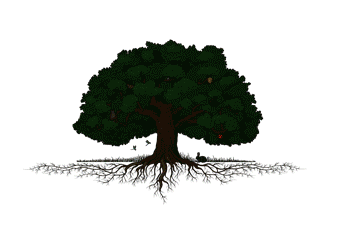Dropmore Linden
The Dropmore Linden is hybrid between the native American Linden and the European Little Leaf Linden. This breeding resulted in a regal tree fit to grow in the most discerning grounds. The tree grows with a strong central leader and a trunk with substantial girth. Leaves are densely growing, dark green and heart shaped. In early summer the tree will burst into colour with clusters of exceptionally fragrant yellow flowers. The tree is an excellent source of nectar for honey bees. The tree has a long history of being the most prairie hardy Linden and is to be considered a low maintenance selection.
| Common Name |
Dropmore Linden |
|---|---|
| Latin Name |
Tilia x flavescens 'Dropmore' |
| Form |
Pyramidal |
| Life Span |
75+ |
| Growth Rate |
Fast |
| Mature Height |
15m |
| Mature Spread |
10m |
| Flower Colour |
Creamy Yellow |
| Fragrance |
Exceptionally Fragrant |
| Fall Colour |
Golden ,Yellow |
| Soil Preference |
Moist and well drained |
| Exposure Preference |
Shade tolerant |
| Cold Hardiness Zone |
Zone 2a |
| Special Attributes and Considerations |
As the tree is exceptionally fragrant, it is wise to choose a planting site on the upwind side of your favourite outdoor sitting area. |
| Folk Lore |
The Dropmore Linden is credited to Mr. Frank Leith Skinner of Manitoba in 1955. The inner bark of the American Linden was used by native americans as a source of fibre for making rope and baskets. |
| Available Sizes |
40mm |
Related products
Black Walnut
Black Walnut Trees are a relatively rare tree for Southern Alberta but they have long been successfully grown in Medicine Hat. They make excellent shade trees and offer a splendid dappled shade with their loose open canopy. As a delicious autumn treat they produce large bounties of rich tasting nuts. They are low maintenance and exceptionally pest and disease resilient. They produce a brilliant fall show of bright yellow leaves. All and all we can not say enough good things about the Black Walnut tree as a consideration for anyones yard with appropriate space.
Box Elder
The Box Elder is a native tree that can often be found growing along streams and rivers. Some folks may know this tree as a Manitoba Maple. The tree is exceptionally drought and cold tolerant. A Box Elder can thrive in the most unforgiving location. Displaying plenty of character they often grow with gnarled and twisted branches. As the wood is weak and females will drop samaras, the Box Elder is best suited as a shade tree in a large yard or as a shelter belt tree in a rural setting.
Brandon Elm
The Brandon Elm is a selection of the native American Elm that grows on the eastern prairies. It was chosen for it’s consistent upright vase form, dense ascending branch structure and being considerably more compact. The leaves are dark green with a serrated margins and turn a golden yellow in the fall. The tree can be trained to have a raised lower branches which makes it suitable for locations with visibility and clearance concerns. Brandon Elms are hardy, drought and urban tolerant. The tree is highly versatile and widely planted for good reason.
Evans Cherry
The Evans Cherry is hardy producer of an edible moderate sweetness cherry. The tree puts on a brilliant show of white flowers in the spring and then produces bright red fruit weighing 4.5g - 5.0g that ripens in mid August. The cultivar is self-pollinating, cold hardy and has a long history of growing in Alberta. The cherry can be eaten right off the tree once ripe, or used for making jams, jellies, pies, and even wines.
Muckle Plum
The Muckle Plum is hybrid between a Canadian Plum and Russian Almond. The tree explodes with a brilliant display of precocious pink flowers in early spring. The leaves are dark green and transition to a warm orange in the fall. The tree is very compact making it a perfect addition to smaller yards. Muckle plums will not grow any fruit so they considered to be very neat and tidy. The tree is cold hardy and makes a fine year around accent tree.
Pembina Plum
The Pembina Plum is hybrid between a Canadian and Japanese plum that was bred over 100 years ago. The tree shows a brilliant display of precocious white flowers in the spring and in late August offers an absolutely delicious plum. The fruit displays a dark red skin and yellow flesh. The fruit is of the clingstone variety, which simply describes how the flesh does not easily pull away from the pit. The tree is very cold hardy and makes a fine year around accent tree. It is indeed a glorious moment to walk over to your Pembina Plum and indulge in a sweet and juicy plum you grew right in your own back yard.
Showy Mountain Ash
The Showy Mountain Ash features showy white spring flowers, pinnately compound leaves and striking red fall fruit. The berries often remain on the tree after the leaves fall, which provides a pleasant winter appearance. The tree is excellent at attracting birds to any yard. The leaves are dark green and transition to orange / red in the fall. Bark is typically smooth and grey, becoming scaly as the tree matures. The tree is slow growing and compact, making it a perfect addition to smaller sites. The tree can be planted as an accent or shade tree.
Tatarian Maple
The Tatarian Maple is a compact, exceptionally hardy and low maintenance accent tree. The tree will display showy red samaras in late summer. Fall colours are vibrant, and leaves often remain on the tree well into winter. Interestingly, the tree will often grow wider than it is tall. The trees trunk is a striking light grey with black markings.















